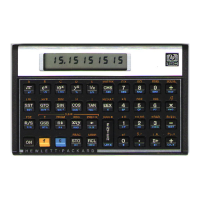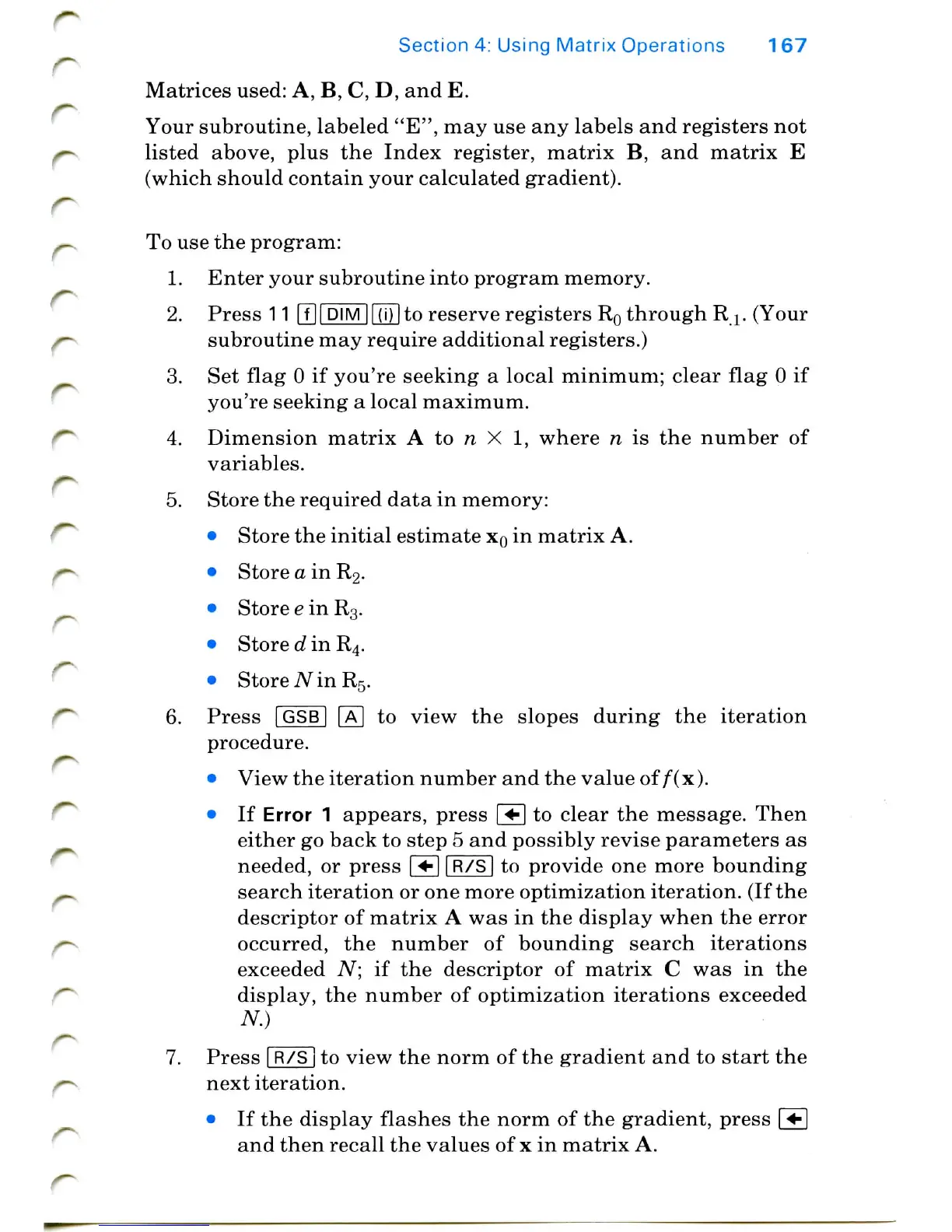Section
4:
Using Matrix Operations
1 67
Matrices used:
A, B, C, D, and E.
Your
subroutine, labeled "E",
may use any
labels
and
registers
not
listed above, plus
the
Index register, matrix
B, and
matrix
E
(which
should contain your calculated gradient).
To
use the
program:
1.
Enter your subroutine into program memory.
2.
Press
11
[T||
DIM
iRlTlto
reserve
registers
R0
through
R
±.
(Your
subroutine
may
require additional registers.)
3.
Set flag 0 if
you're seeking
a
local minimum; clear
flag 0 if
you're
seeking
a
local maximum.
4.
Dimension matrix
A to n X 1,
where
n is the
number
of
variables.
5.
Store
the
required
data
in
memory:
•
Store
the
initial estimate
x0
in
matrix
A.
•
Store
a in
R2.
•
Store
e in
R3.
•
Store
d in
R4.
•
Store
N in
R5.
6.
Press
|GSB|
[A]
to
view
the
slopes during
the
iteration
procedure.
•
View
the
iteration number
and the
value
of/(x).
• If
Error
1
appears, press
[+]
to
clear
the
message. Then
either
go
back
to
step
5 and
possibly revise parameters
as
needed,
or
press
|
+|
|
R/S
| to
provide
one
more bounding
search iteration
or one
more optimization iteration.
(If
the
descriptor
of
matrix
A was in the
display when
the
error
occurred,
the
number
of
bounding search iterations
exceeded
N; if the
descriptor
of
matrix
C was in the
display,
the
number
of
optimization iterations exceeded
N.)
1.
Press
|
R/S
| to
view
the
norm
of the
gradient
and to
start
the
next iteration.
• If the
display
flashes the
norm
of the
gradient, press
f^l
and
then recall
the
values
of x in
matrix
A.

